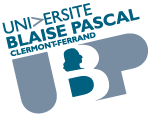Predominance of BRCA2 Mutation and Estrogen Receptor Positivity in Unselected Breast Cancer with BRCA1 or BRCA2 Mutation
Résumé
Background: Poly(ADP-ribose) polymerase 1 inhibitor (PARPi) agents can improve progression-free survival of patients with breast cancer who carry a germline BRCA1 or BRCA2 pathogenic or likely pathogenic variant (gBRCA) in both the metastatic and adjuvant setting. Therefore, we need to reassess the frequency of gBRCA1 and gBRCA2 in order to redefine the criteria for women and tumor phenotype that should be tested.
Objective: We studied the relative distribution of gBRCA1 and gBRCA2 in unselected populations of women with breast cancer and in unaffected individuals. We also analyzed the proportion of estrogen receptor (ER)-positive (ER+) tumors in unselected breast cancer patients with gBRCA. Design: We performed a meta-analysis of studies of unselected breast cancer that analyzed the relative contribution of gBRCA1 versus gBRCA2 among unselected breast cancer cases in gBRCA carriers. We then performed a meta-analysis of gBRCA carriage in unaffected individuals from genome-wide population studies, the gnomAD databank, and case–control studies.
Results: The BRCA2 gene was involved in 54% of breast cancer cases in unselected patients with gBRCA (n = 108,699) and 60% of unaffected individuals (n = 238,973) as compared with 38% of the largest gBRCA family cohort (n = 29,700). The meta-analysis showed that 1.66% (95% CI 1.08–2.54) and 1.71% (95% CI 1.33–2.2) of unselected breast cancer patients carried gBRCA1 and gBRCA2, respectively. In a population of unaffected individuals, the frequency of heterozygosity for gBRCA1 and gBRCA2 was estimated at 1/434 and 1/288, respectively. Nearly 0.5% of unaffected individuals in the studied populations carried a gBRCA. Carriage of a gBRCA was 2.5% for patients with ER+ tumors (95% CI 1.5–4.1) and 5.7% (95% CI 5.1–6.2) for those with ER- tumors. Overall, 58% of breast tumors occurring in women carrying a gBRCA were ER+ (n = 86,870).
Conclusions: This meta-analysis showed that gBRCA2 carriage is predominant in unselected breast cancer patients and unaffected individuals. ER+ tumors among women with gBRCA-related breast cancer are predominant and have been underestimated. Because PARPi agents improve progression-free survival with ER+ gBRCA breast cancer in most clinical trials, breast cancer should be considered, regardless of ER status, for BRCA1/2 screening for therapeutic purposes.
Origine : Publication financée par une institution
licence : CC BY - Paternité
licence : CC BY - Paternité



